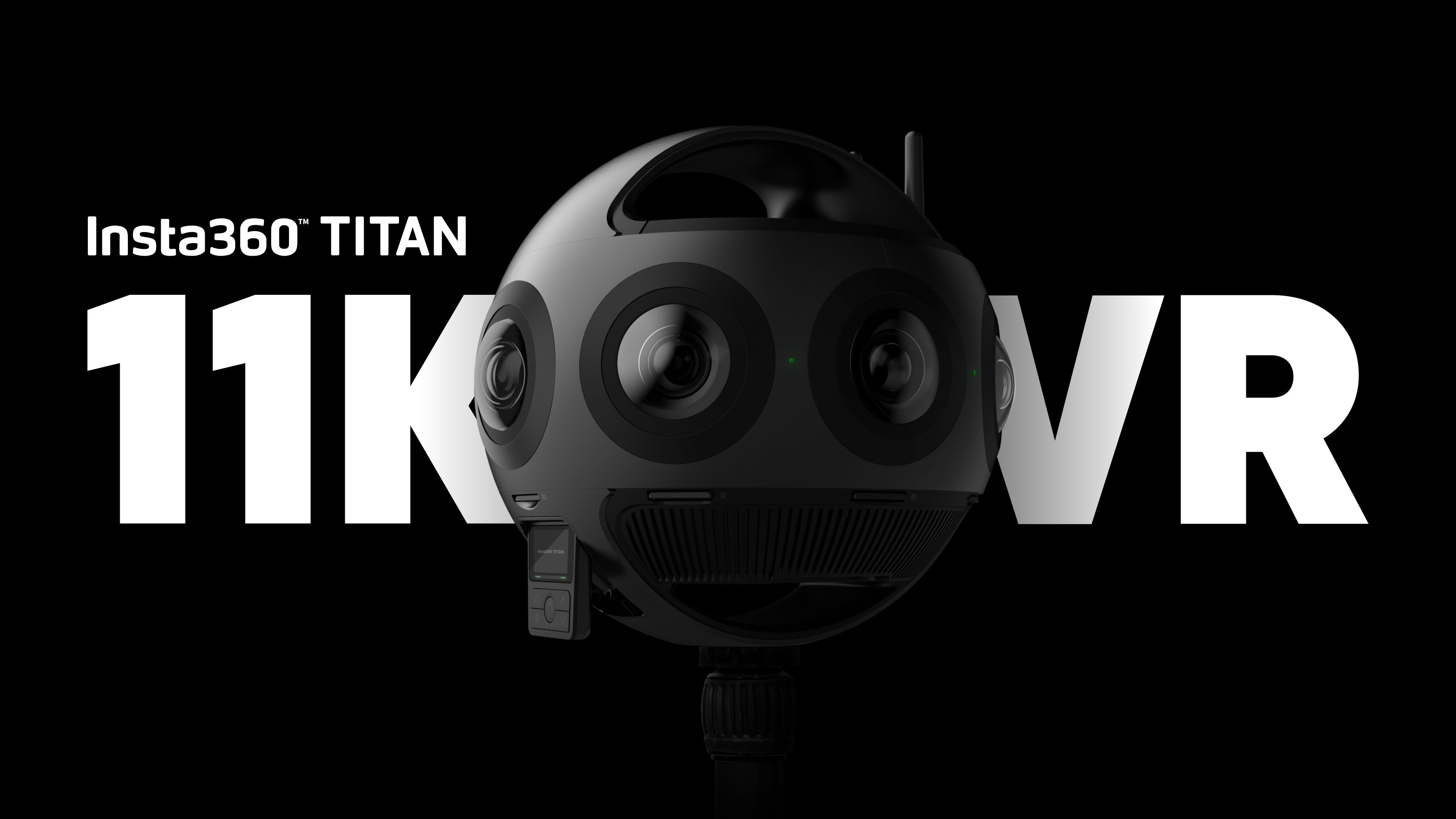The Insta360 Titan promises VR video you won’t believe
With eight (eight!) Micro Four Thirds sensors, the Titan captures 360 video and stills at 11K resolution

Where regular consumer 360 cameras top out at a maximum 5.7k, the Insta 360 Titan captures at an incredible 11K resolution. Launched at CES 2019, the Titan produces 10,560 x 5,280 video and stills. Not only that, it can capture both in 2D (monoscopic) and 3D (stereoscopic) formats.
Ordinary 360 cameras use a two small smartphone-size sensors back to back, with a 180+ degree fisheye lens over each, then stitch the two hemispherical images into a single 360 degree image in-camera in real time.
That’s fine for casual use but pro VR (virtual reality) content makers need much higher levels of quality, and that’s the market the Titan is aimed at. To achieve its stunning resolution it uses no fewer Than eight Micro Four Thirds (MFT) sensors arrange around its bowling ball shaped circumference. These are the largest sensors available in any standalone VR camera, and offer far higher resolution, dynamic range, low-light performance and colour depth than regular 360 camera sensors.
Keep it steady
The Titan uses the same advanced FlowState image stabilisation system used in its Insta360 One X model, which is currently at the number one position in our Best 360 cameras buying guide. Insta360 claims gimbal-like 9-axis stabilisation that keeps your VR viewpoint level no matter how the Titan is being handled or manoeuvred. It also uses Insta360’s Farsight live monitoring system using a transmitter and a receiver that can be attached to a phone or tablet.
11K video is captured at up to 30fps, but if you want super-smooth slow-motion effects you can shoot 60fps at 8K resolution or 120fps at 5.3K resolution.
The Insta360 Titan is being showcased at the annual CES exhibition in Las Vegas from January 7-11 and the company has opened ‘reservations’ for its new product which is set to ship in April.
This incredible technology doesn’t come cheap of course, so the price tag of $14,999 USD pitches the Titan firmly at the professional market.
The best camera deals, reviews, product advice, and unmissable photography news, direct to your inbox!
Read more:
CES 2019: cameras, kit and launches
The best 360 cameras in 2019

Rod is an independent photography journalist and editor, and a long-standing Digital Camera World contributor, having previously worked as DCW's Group Reviews editor. Before that he has been technique editor on N-Photo, Head of Testing for the photography division and Camera Channel editor on TechRadar, as well as contributing to many other publications. He has been writing about photography technique, photo editing and digital cameras since they first appeared, and before that began his career writing about film photography. He has used and reviewed practically every interchangeable lens camera launched in the past 20 years, from entry-level DSLRs to medium format cameras, together with lenses, tripods, gimbals, light meters, camera bags and more. Rod has his own camera gear blog at fotovolo.com but also writes about photo-editing applications and techniques at lifeafterphotoshop.com
